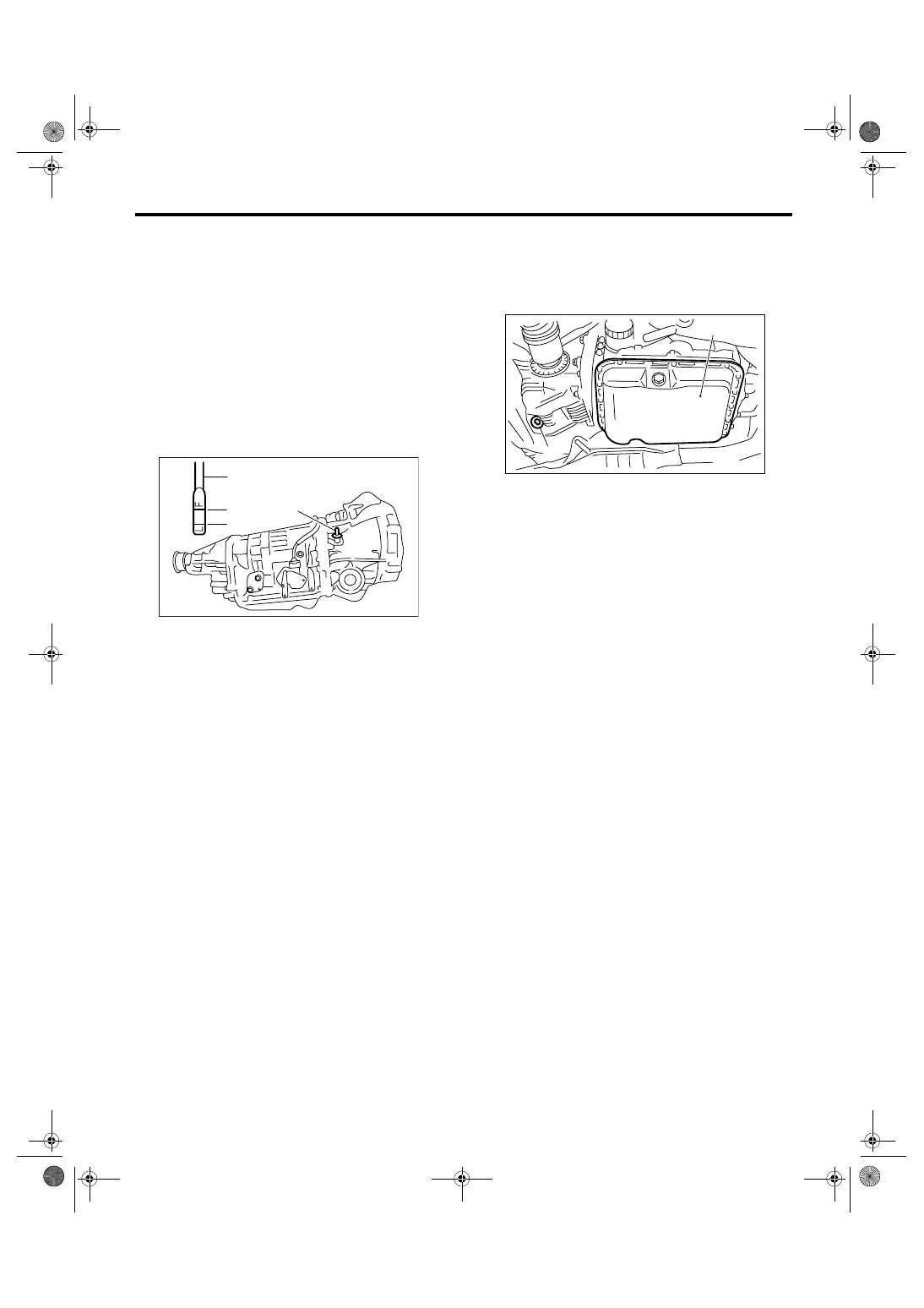Subaru Legacy (2005 year). Manual - part 513

4AT-33
AUTOMATIC TRANSMISSION
Differential Gear Oil
3. Differential Gear Oil
A: INSPECTION
1) Park the vehicle on a level surface.
2) Remove the oil level gauge and wipe it clean.
3) Reinsert the level gauge all the way. Be sure that
the level gauge is correctly inserted and in the
proper orientation.
4) Remove the level gauge again and note the
reading. If the differential gear oil level is below “L”
line, add oil to bring the level up to “F” line.
NOTE:
To prevent overfilling the differential gear oil, do not
fill oil above the “F” line.
B: REPLACEMENT
1) Lift up the vehicle.
2) Remove the differential gear oil drain plug using
TORX
®
BIT T70, and drain the differential gear oil
completely.
CAUTION:
• Directly after the vehicle has been running,
differential gear oil is hot. Be careful not to burn
yourself.
• Be careful not to spill the differential gear oil
on exhaust pipe to prevent it from emitting
smoke or fire. When the differential gear oil is
spilled on exhaust pipe, wipe it away complete-
ly.
3) Tighten the differential gear oil drain plug using
TORX
®
BIT T70.
NOTE:
Use a new gasket.
Tightening torque:
Aluminum gasket
44 N
⋅
m (4.5 kgf-m, 32.5 ft-lb)
Copper gasket:
70 N
⋅
m (7.1 kgf-m, 51.6 ft-lb)
4) Lower the vehicle.
5) Pour gear oil through the gauge hole.
Recommended gear oil:
<Ref. to 4AT-3, RECOMMENDED GEAR OIL,
SPECIFICATION, General Description.>
Gear oil capacity:
1.1 — 1.3
2 (1.2 — 1.4 US qt, 1.0 — 1.1 Imp qt)
6) Check the level of differential gear oil.
<Ref. to 4AT-33, INSPECTION, Differential Gear
Oil.>
(A) Oil level gauge
(B) Upper level
(C) Lower level
PI-00183
(B)
(C)
(A)
(A)
(A) Oil pan
(B) Differential gear oil drain plug
AT-02204
(B)
(A)